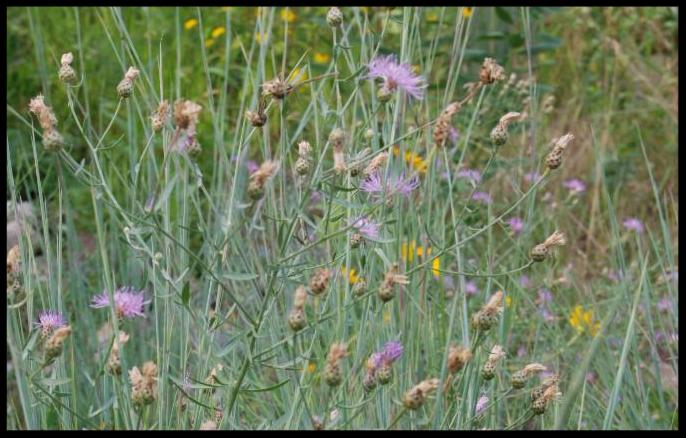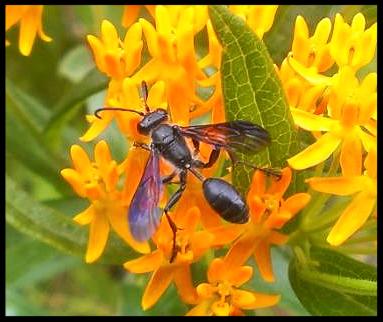|
February Article
|
|
It's for the Birds
 |
|
 |
Photo: Carrie Mack Magnuson
|
Did you know that Minnesota is home to well over 200 native bird species? In a couple of months, longer days and warmer temperatures will help to trigger the northerly bird migration. As kids, we grew up with feeders in the backyard, and this free food did attract a host of bird species to our properties. But now, times have changed, and we are thinking bigger by figuring out sustainable ways to improve bird life. In addition to feeders, we are using natural habitat, a diversity of plant species that provide ample food, shelter, and nesting areas for a multitude of bird species that we love.
 If you live on the outskirts of town or in the country, you may be thinking about restoring old fields into diverse prairie patches. This type of land stewardship is critical since, today, less than 2% of Minnesota's original native prairie remains. Prairie grasses, such as Indian grass (
Sorghastrum nutans
), big bluestem (
Andropogon gerardii
), little bluestem (
Schizachyrium scoparium
), side-oats grama (
Bouteloua curtipendula
), and prairie dropseed (
Sporobolus heterolepis
) are vital habitat for prairie fowl such as the Ring-necked Pheasant, Prairie Chicken, and the Prairie Grouse. Grass species provide food - seed, new shoots, and even insects that are attracted to the vegetation. The mass of leaves and stems provides cover during the harsh winter months, and then a safe place to raise fledgling broods in the spring. If you live on the outskirts of town or in the country, you may be thinking about restoring old fields into diverse prairie patches. This type of land stewardship is critical since, today, less than 2% of Minnesota's original native prairie remains. Prairie grasses, such as Indian grass (
Sorghastrum nutans
), big bluestem (
Andropogon gerardii
), little bluestem (
Schizachyrium scoparium
), side-oats grama (
Bouteloua curtipendula
), and prairie dropseed (
Sporobolus heterolepis
) are vital habitat for prairie fowl such as the Ring-necked Pheasant, Prairie Chicken, and the Prairie Grouse. Grass species provide food - seed, new shoots, and even insects that are attracted to the vegetation. The mass of leaves and stems provides cover during the harsh winter months, and then a safe place to raise fledgling broods in the spring.
OK, so not everyone is so fortunate to live in the
country. We often get asked: Is a small prairie patch or natural shoreline buffer really worth it in the city? The answer is
 |
|
 |
Photo: Carrie Mack Magnuson
|
unequivocally yes! As we continue to create and maintain natural habitat in the city, we are routinely amazed at the value of small patches of natural habitat. For example, we have seen pheasant lay down in a shore buffer in the heart of St. Paul. We have observed hundreds of cedar waxwings pick off berries from a few small cedar trees on a 50' x 100' Bloomington lot. And the spring migration of warblers, tanagers, buntings, vireos, and thrushes key in on patches of suburban prairie; birds perching on dried prairie flowers, in search of energy packed seed. So what is our view on creating natural habitat in the city? Yes, it's for the birds.
 Are you interested in beginning to create habitat or expanding your existing natural area? Think about a landscape plan and your opportunities to add diversity. Two types of diversity are important - native plant diversity and structural diversity, like dead trees, logs, brush piles, and water sources. Think about adding plants that provide vertical opportunities - trees, shrubs, to go along with prairie and shoreline habitat closer to the ground. Another important consideration is food availability Are you interested in beginning to create habitat or expanding your existing natural area? Think about a landscape plan and your opportunities to add diversity. Two types of diversity are important - native plant diversity and structural diversity, like dead trees, logs, brush piles, and water sources. Think about adding plants that provide vertical opportunities - trees, shrubs, to go along with prairie and shoreline habitat closer to the ground. Another important consideration is food availability
throughout the year. Providing a variety of plant
species with different bloom and fruiting periods assures bird food during all seasons. The added structure in your yard will provide nesting habitat, and the prairie plants are an excellent source of nesting material. For instance, goldfinches and other songbirds use milkweed plant fiber to line their nests, as well as with the fluff from the seeds.
Need help picking out native plants or creating a design to sustain our native bird community? Our retail nursery opens soon and we would love to help you choose appropriate plants for your landscape. We also have a landscape designer ready to assist with larger projects.
Please check our
website for updates on our retail nursery!
|
|
Photo Caption Contest of the Month *New!*
|
Caption our Photo and Win Prizes!
Our NST yellow lab Blanca loves native plants! This picture of her in a restored native prairie needs
a caption!
Visit and "Like" our Facebook Page Here!
Then add your caption to this photo and you could win!
1st Place: $25 Gift Certificate for Free Plants! and a NST T-shirt!
Runner up: 2 NST Beer Mugs and a NST T-shirt
It's that easy! And check back next month for another
photo
caption contest!
|
|
Native Plant of the Month
|
Sporobolus heterolepis
Moisture: Moist or Dry
Exposure: Full Sun or Partial Shade
Blooms: August-October
Height: 2-4 Feet
Prairie dropseed is an attractive warm season, perennial grass native to the Great Plains and Prairie regions of the U.S. It stays in tight clumps and has an extensive root system that goes deep into the ground. It produces small, round seeds that it drops in the fall for prairie birds to forage on. The leaves are a yellowish-green that turn more bronze in the fall. They are about a foot long and very thin, drooping down slightly. This grass is also tolerant of deer and rabbit browse as well as drought conditions.
|
|
Invasive Plant of the Month
|
Spotted Knapweed

Moisture: Dry
Exposure: Full Sun
Blooms: June- Oct.
Color: Pinkish-Purple
Height: 2-3 Feet
Spotted Knapweed is a biennial. During its first year it is a rosette of leaves and then matures into a flowering plant in the
second year
. It has silvery, deeply lobed leaves on tough, almost woody stems. The leaves at the base of the plant are bigger than the leaves found higher up on the branching stems. The flowers look like thistle flowers and are a light purplish pink. The flowers can range from 25-100 flowers per plant! This is a plant from Europe that invades fields and prairies and can form dense colonies that crowd out natives. They also produce chemicals that hamper growth of other plants. Management strategies include preventing this plant from reaching seed maturity through hand-pulling (use gloves), weed whipping, or timely herbicide applications.
|
Grass Carrying Wasp

Isodontia spp.
Range
: Throughout North America
Identification
: A medium sized wasp with a black body and dark brown wings, the Grass Carrying Wasp gets its name from sectioning off and closing up its nest with blades of grass. It
 |
|
 |
Female carrying paralyzed katydid back to her nest.
|
is a member of the wasp family that is characterized by its very thin waist. This is a predatory wasp that hunts katydids and crickets. It paralyzes its victim and takes it back to the nest where it is stored to feed their young. It is a solitary wasp that is not aggressive towards humans. So don't worry when you see one!
Pollination: Adults visit boneset, rattlesnake master, mountain mint, butterfly weed, and other native plants for nectar.
|
|
|
Our retail nursery is currently closed. But will reopen this spring! Check out our 2017 retail hours below:
10 am - 4 pm only on the following days:
|
Thursdays
|
Saturdays
|
| May 18 |
Closed |
| May 25 |
Closed |
| June 1 |
June 3 |
| June 8 |
June 10 |
| June 15 |
June 17 |
| June 22 |
June 24 |
| June 29 |
Closed |
| July 20 |
July 22 |
|
Aug. 17
|
Aug. 19
|
Our retail nursery address is:
1480 County Rd. 90 Independence MN 55359
Click and visit our website for current
|
We will be at
Pheasants Forever's
2017 National Pheasant Fest and Quail Classic at the Minneapolis Convention Center on Feb. 17th-19th

Come visit us at the Wild Ones Design with Nature Conference on February 18th! This year's theme is "Planting Matters- what you plant and why" at the Anderson Student Center at the University of St. Thomas
|
Prairie Wildlife Habitat!
Pheasants, Grouse, Rabbits, and many other animals in Minnesota rely on native prairie species to survive. The grass and flower species are used for food, shelter from predators, and rearing their young! Unfortunately much of our original prairie habitat is gone. Plant these natives to help provide habitat to wildlife looking for a little prairie home.
1. Big Bluestem
(
Andropogon gerardii)

2. Little Bluestem
(
Schizachyrium scoparium)

3. Indian Grass
(Sorghastrum nutans)
4. Prairie Dropseed
(Sporobolus heterolepsis)

5. Purple Prairie Clover (
Dalea purpurea)
Want to learn more about these native plants? Click Here to visit our website!
|
|
 |
|